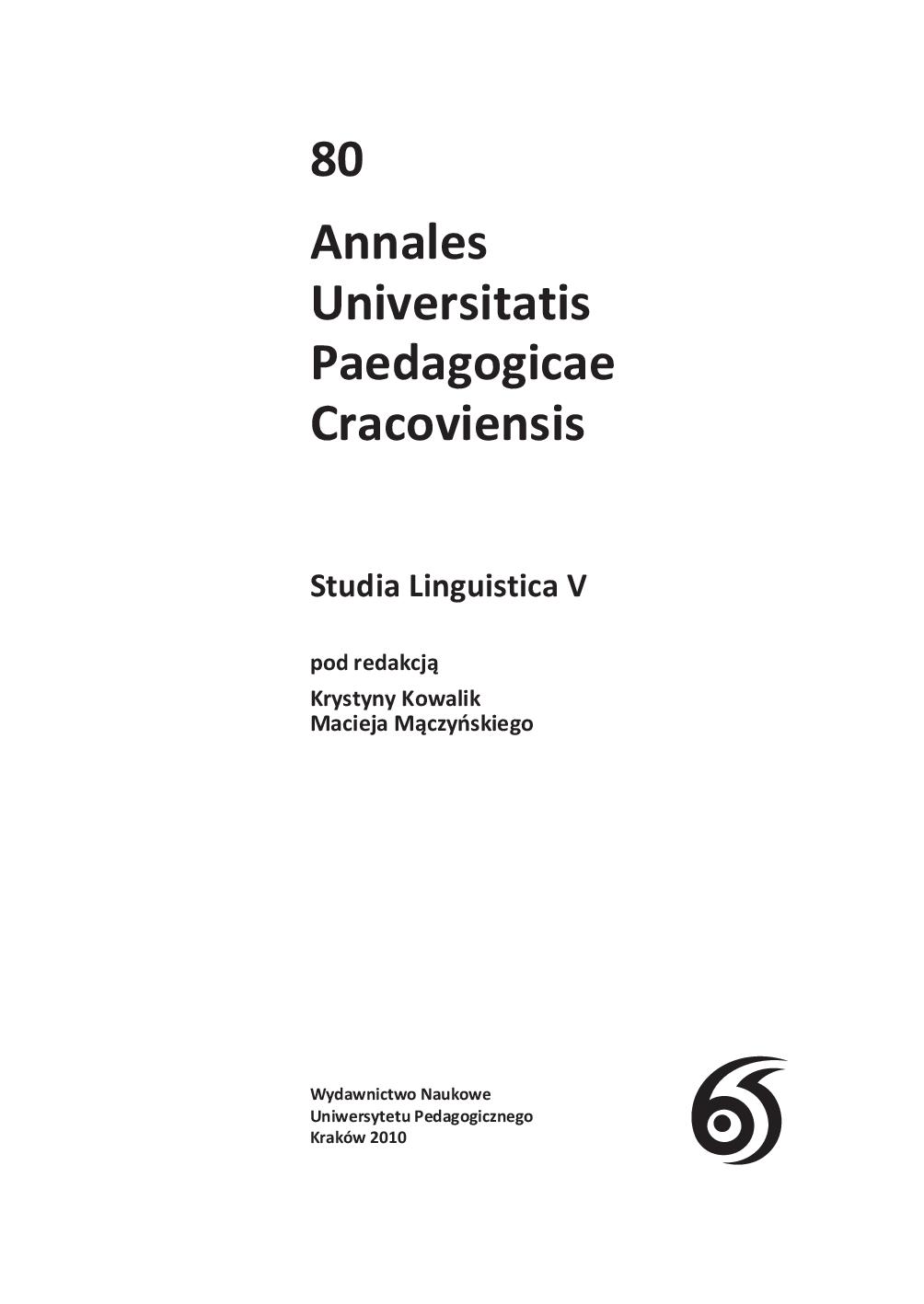Napisy na murach jako gatunek miejskiej polszczyzny pisanej
Main Article Content
Abstract
brick walls, board fences, and in public places”, as part of the written language of an urban
youth subculture, are seldom the subject of linguistic research and belong to the genre of
the street artistic work referred to as graffiti. The phenomenon of graffiti can be regarded
not only as a type of art (some murals can be found in New York galleries) but also as a sort
of mass social communication, especially at the level of words, i.e. the strictly linguistic one.
The urban space - walls, boards, public service vehicles (the underground, trains) - become
a specific medium and a special means of subcultural social communication in that way. Wall
inscriptions visually organise the urban space of interpersonal communication.
Vital features of that genre are humour and hybridity in respect of form - the message may
be a solely verbal one, a word may be accompanied by an image, but the message may also
be a drawing only (graphic form). All those features enable establishing graffiti as a separate
text genre of the urban written Polish language, whose feature, distinguishing it from other
types of expression, is its unique illocutionary power. Through that act of illocution, authors
of inscriptions want, at all cost, to achieve something in various spheres of reality, and in
particular to draw other people’s attention to what those other people allegedly do not notice
themselves.
Downloads
Article Details
Author, submitting a text to the editorial board of the journal “Annales Universitatis Paedagogicae Cracoviensis. Studia Linguistica", certifies that the content of the article has not been published so far and that the work does not violate in any way the copyright or related rights of other person, as well as other rights of third parties, and that no one's rights to the work (or any part thereof) have been missed. After signing the contract, the property rights to the published materials are transferred to the Scientific Publisher of the University of the National Education Commission, Krakow.
“Annales Universitatis Paedagogicae Cracoviensis. Studia Linguistica” is an open access journal, and all its content is made available free of charge to users and institutions under the Creative Commons CC-BY-NC-ND 4.0 license (attribution, non-commercial use, no derivative works). Under this license, the authors agree that their work may be lawfully reused for any purpose, except for commercial purposes, without the prior consent of the author or publisher. Everyone can read, download, copy, print, distribute and process these works, provided that the author's marking and the original publication place are correct. Published texts may not be used to create derivative works (e.g. to translate and publish in another language without the consent of the publisher). This is in line with the BOAI (Budapest Open Access Initiative) definition. "Studia Linguistica" does not charge for submitting or processing articles.
References
Chmielewska N., 1995, Osobliwa technika językowa, „Polonica”, t. XVII, s. 109–120.
Google Scholar
Chrzanowska J.M. 2008, Anonimowość sztuki, „Preteksty”, nr 9, s. 19–23.
Google Scholar
Chudzik A., 2004, Uliczny dialog napisów, [w:] Język trzeciego tysiąclecia III, Kraków, s. 37–44.
Google Scholar
Kiliańska-Przybyło G., 1997, Humor napisów na murach – opis, analiza, interpretacja, [w:] Języ- ki specjalistyczne, język biznesu, red. J. Arabski, Katowice, s. 122–134.
Google Scholar
Michow E., 1995, Polskie graffiti, „Polonica”, t. XVII, s. 109–120.
Google Scholar
Miodek E., 2001, Graffiti we współczesnej kulturze językowej polskiej młodzieży, „Nauczyciel i Szkoła”, 3–4.
Google Scholar
Osęka A., 1990, Spowiedź uliczna, „Gazeta Wyborcza”, 29–30 IX.
Google Scholar
Rozmowa na początek wieku, z profesorem Aleksandrem Giesztorem rozmawiał paweł Wroński, „Gazeta Wyborcza” 13–14.02.1999, s. 10.
Google Scholar
Skubalanka T., 1999, Język graffitti, „Stylistyka”, t. 8, s. 89–104.
Google Scholar
Wojtak M., 2004, Gatunki prasowe, Lublin.
Google Scholar
Zellma A., Moralne aspekty graffiti, http://www.opoka.org.pl/biblioteka/Z/ZR/wychowanie/ moralneaspektygraffiti.html [dostęp 15.05.2008].
Google Scholar
